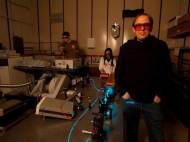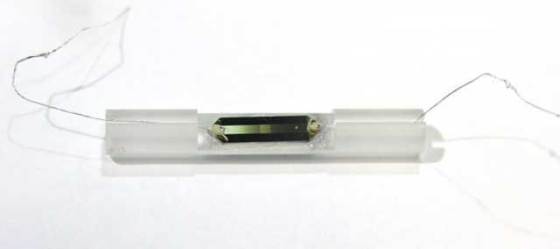Researchers managed to read data after storing it in atomic nuclei
 University of Utah physicists managed to store information for 112 seconds in what may become the world’s tiniest computer memory – magnetic “spins” in the centers or nuclei of atoms. Afterwards, they were able to retrieve and read the data electronically – a big step toward using the new kind of memory for both faster conventional and superfast “quantum” computers.
University of Utah physicists managed to store information for 112 seconds in what may become the world’s tiniest computer memory – magnetic “spins” in the centers or nuclei of atoms. Afterwards, they were able to retrieve and read the data electronically – a big step toward using the new kind of memory for both faster conventional and superfast “quantum” computers.
The study was led by Boehme and first author Dane McCamey, a former research assistant professor of physics at the University of Utah and still an adjunct assistant professor. His main affiliation now is with the University of Sydney. Other co-authors were Hans van Tol of the National High Magnetic Field Laboratory in Tallahassee, Fla., and Gavin Morley of University College London.
Quantum computers – a yet-unrealized goal – would run on the odd principles of quantum mechanics, in which the smallest particles of light and matter can be in different places at the same time. In a quantum computer, one quantum bit or “qubit” could be both 0 and 1 at the same time. That means quantum computers theoretically could be billions of times faster than conventional computers.
However, there is a catch that keeps this technology away from the near commercial application because the nuclear spin storage-and-read-out apparatus works only few degrees above the temperature of absolute zero. If this information doesn’t get your hopes down, the apparatus also has to be surrounded by powerful magnetic fields roughly 200,000 times stronger than Earth’s.
“Yes, you could immediately build a memory chip this way, but do you want a computer that has to be operated at 454 degrees below zero Fahrenheit and in a big national magnetic laboratory environment?”, said Christoph Boehme, an associate professor of physics. “First we want to learn how to do it at higher temperatures, which are more practical for a device, and without these strong magnetic fields to align the spins.”
Two years ago, another group of scientists reported storing so-called quantum data for two seconds within atomic nuclei, but they did not read it electronically, as Boehme and colleagues did in the new study, which used binary data (0 or 1) rather than quantum data (0 and 1 simultaneously). The technique was developed in a 2006 study by Boehme, who showed it was feasible to read data stored in the net magnetic spin of 10,000 electrons in phosphorus atoms embedded in a silicon semiconductor.
For the experiments, McCamey, Boehme and colleagues used a thin, phosphorus-doped silicon wafer measuring 1 millimeter square, and placed electrical contacts on it. The device was inside the mentioned supercold container, and surrounded by intense magnetic fields. Wires connected the device to a current source and an oscilloscope to record data. The researchers used powerful magnetic fields of 8.59 Tesla to align the spins of phosphorus electrons.
“The nucleus sits in the middle of an atom and its spin isn’t messed with by what’s going on in the clouds of electrons around the nucleus”, said McCamey. “Nuclei experience nearly perfect solitude. That’s why nuclei are a good place to store information magnetically. Nuclear spins where we store information have extremely long storage times before the information decays.”
Then, pulses of near-terahertz electromagnetic waves were used to “write” up or down spins onto electrons orbiting phosphorus atoms. A simplified way to describe spin is to imagine that each particle – like an electron or proton in an atom – contains a tiny bar magnet, like a compass needle, that points either up or down to represent the particle’s spin. Down and up can represent 0 and 1 in a spin-based quantum computer.
Next, FM-range radio waves were used to take the spin data stored in the electrons and write it onto the phosphorus nuclei. Later, other pulses of near-terahertz waves were used to transfer the nuclear spin information back into the orbiting electrons, and trigger the readout process. The readout is produced because the electrons’ spins are converted into variations in electrical current.
In a much shorter time, the physicists read and reread the same nuclear spin data 2,000 times, showing the act of reading the spin data doesn’t destroy it, making the memory reliable. The researchers hope to develop this technology even further by resolving the spins of single nuclei.










Leave your response!